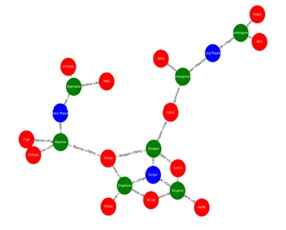Network Ethnopharmacology: Unraveling Multitargeted Herbs and Formulations Along with Network Pharmacology of Ashwagandha and Trikatu

DOI:
https://doi.org/10.54060/a2zjournals.ijahr.46Keywords:
network pharmacology, Ethnopharmacology, Drug discovery, network Mapping, Ayurveda, Ashwgandha, TrikatuAbstract
In Ayurveda, ancient science of well-being various herbs (Dravya) and formulations (Yoga) are mentioned to cure multiple diseases (Vyadhi). In Dravya Guna Shastra, the branch of Ayurveda, various fundamental principles (Siddhanta) are men-tioned according to which all herbs and formulations target different systems of the body. However, validation of the claim by the Ayurvedic herbs or formulations always remains a challenge. Network pharmacology is a promising tool for over-coming this challenge. Network pharmacology is the approach that looks at how everything works together i.e. it makes us understand how different medicines, diseases, and various systems of our body are connected. It is the study of the complex network of drug action on various biological pathways and targets. This unique approach is similar to Ayurveda fundamentals that focus on the interaction between multiple components within the body while doing treatment by use of herbs and various herbal formulations. In this research paper integration of Ayurvedic knowledge with network pharmacology is mapped which helps in the future for drug discovery and scientific validation for Ayurvedic treatment strategies which ultimately contribute to the advancement of Ayurveda. Along with this network pharmacology of Ashwgandha and Trikatu by current research, active ingredients, related techniques/ tools/ databases, are also mentioned which helps the researcher to understand the phenomena of discovering the novel compounds and explore the full biological potential of Ayurvedic herbs and formulations using the network pharmacology.
Downloads
References
Hopkins AL. Network pharmacology: the next paradigm in drug discovery. Nat Chem Biol. 2008 Nov; 4 (11): 682- 90. doi: 10.1038/nchembio.118. PMID: 18936753.
Wu X., Jiang R., Zhang M.Q., Li S. Network-based global inference of human disease genes. Mol. Syst. Biol. 2008; 4: 189.
Yao X., Hao H., Li Y., Li S. Modularity-based credible prediction of disease genes and detection of disease subtypes on the phenotype-gene heterogeneous network. BMC Syst. Biol. 2011; 5: 79.
Patwardhan B., Chandran U. Network ethnopharmacology approaches for formulation discovery. Ind. J. Tradit. Knowl. 2015; 14: 574– 580.
Sorokina, Maria & Merseburger, Peter & Rajan, Kohulan & Yirik, Mehmet & Steinbeck, Christoph. (2021). COCONUT online: Collection of Open Natural Products database. Journal of Cheminformatics. 13. 10. 1186/ s13321- 020- 00478- 9.
Liu T, Lin Y, Wen X, Jorissen RN, Gilson MK. BindingDB: a web-accessible database of experimentally determined protein-ligand binding affinities. Nucleic Acids Res. 2007 Jan; 35 (Database issue): D198- 201. doi: 10. 1093/ nar/ gkl999. Epub 2006 Dec 1. PMID: 17145705; PMCID: PMC1751547.
Shloka no. 189, 190, Guduchyadi Varga, Bhava Prakash Nighantu, Indian material medica of SRI BHAVMISHRA (C. 1500- 1600A.D).
Johri RK, Zutshi U. An Ayurvedic formulation 'Trikatu' and its constituents. J Ethnopharmacol. 1992 Sep; 37 (2): 85- 91. doi: 10.1016/0378-8741(92)90067-2. PMID: 1434692.

Downloads
Published
How to Cite
CITATION COUNT
Issue
Section
License
Copyright (c) 2025 Tanvi Sood

This work is licensed under a Creative Commons Attribution 4.0 International License.























